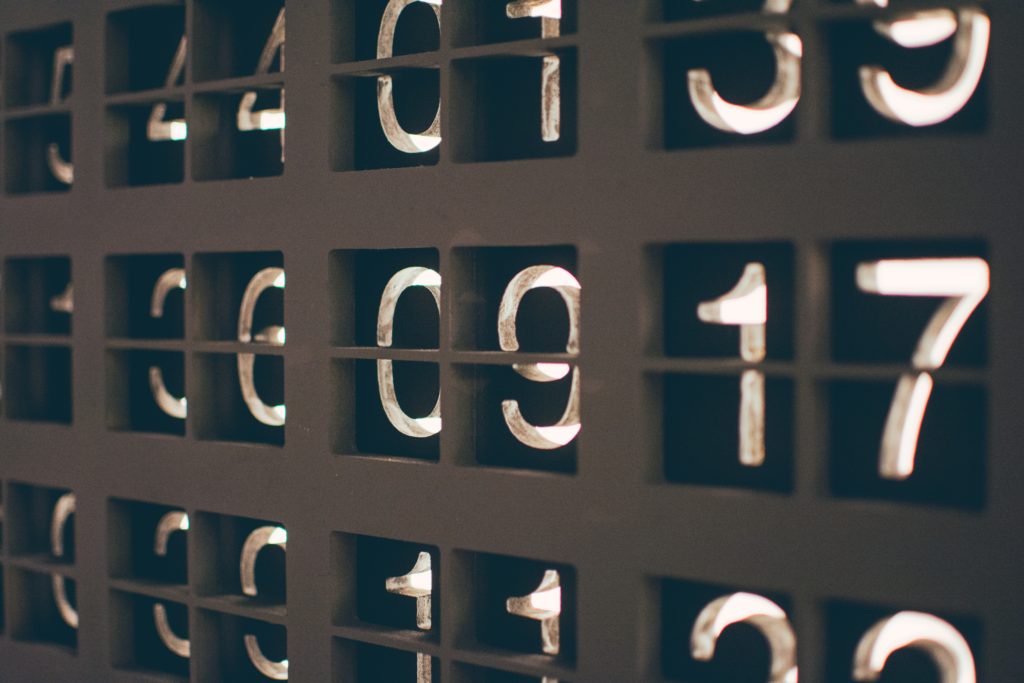Last Updated on: 30th August 2022, 04:41 am
APA style can be annoyingly precise with its requirements. But that’s exactly why style guides exist–to make up for the ambiguity of English grammar rules and offer a standard way to write. That’s why universities, newspapers, publishing houses, and academic journals all use style guides–to ensure that the material they produce all follows the same guidelines.
Writing numbers in APA style is fairly simple, but there are some exceptions to be aware of. All of the information below comes from the APA Publication Manual, 6th edition.
First, let’s look at the simple answer.
APA Numbers: The Simple Answer
The simplest thing to remember is, write out numbers below ten, and use numerals for numbers ten and greater.
For example,
“We interviewed three men and five women.”
“We surveyed 42 retail managers.”
However, there are some important exceptions to this rule. Below, I’ll detail the full requirements for APA numbers.
When to Write Out Numbers in APA Style
Beginning a sentence
Always write out numbers that begin a sentence or a title. However, the APA style website recommends trying to re-word a sentence to avoid beginning with a number when possible.
“Thirty-five percent of the respondents said they had received little or no support from the program.”
“Thirteen of the participants received a placebo.”
Common Fractions
Always write out common fractions.
“While two-thirds of the participants said they found the program beneficial, the remainder of the participants said that they received little or no support.”
Ordinal Numbers
Write out ordinal numbers.
“By the time they reach twelfth grade, students should be adequately prepared for college.”
Universally Accepted Usage
Words that have a universally accepted usage as written out.
“The Twelve Apostles”
“The Five Pillars of Islam”
When to Use Numerals in APA Style

Generally speaking, use numerals in all situations except the exceptions above. However, here are the situations the APA Publication Manual recommends.
Numbers 10 and Greater
Use numerals for numbers 10 and greater. For example,
“However, only 15 nurses filled out the questionnaire.”
“All of the companies lost over $8,000,000 as a result of the crash.”
Followed By Units of Measurement
Any number immediately followed by units of measurement should be written in numeral form.
“Participants each received a 3 mg dose.”
“Children less than 5 years old were not eligible to be participants in the study.”
“Participants received a second dose at 1:30 p.m.”
Scores, Scales, and Graphs
Use numerals for any numbers that represent scores, points on a scale, or any number in a figure or graph.
“A score of 6 on a 7-point Likert scale.”
Representing Mathematical Functions
Statistical or mathematical functions, fractions, ratios, percentiles, and quartiles.
“…multiplied by 3”
“…the 5th percentile”
Time
Numbers exact representing time, dates, ages. Approximations are represented by words (“about nine months ago”)
“2 hr 44 min”
“At 3:00”
Place in a Series
Use numerals for specific points in a series such as chapters or pages in a book “Page 5”
“Chapter 12”
“Module 7”
Exact Sums
Use numerals to represent exact sums of money.
“3 dollars and 15 cents.”
Numbers Appearing Together
When numbers are used to modify other numbers, write out one of them. For example,
“Six 5-year-olds” (rather than 6 5-year-olds, which might be mistaken for “65-year-olds”)
In The Abstract
Always use numerals in the abstract, even for numbers below ten.
Other APA Number Rules to Be Aware Of
There are a few more rules to be aware of when writing numbers in APA style.
Decimal Fractions
Use a zero before the decimal point with numbers that are less than 1 (when the statistic can exceed 1).
“0.43 cm”
Roman Numerals
If roman numerals are “part of an established terminology,” don’t change them to traditional (Arabic) numerals.
“Type II error”
Commas in Numbers
As a general rule, use commas as you normally would (“1,000,”). However, observe the following exceptions:
- Page numbers
- Binary digits
- Serial numbers
- Degrees of temperature
- Acoustic frequency designations
- Degrees of freedom
Plurals of Numbers
Add an “s” or “es” to numbers to pluralize them, whether they are numerals or written out. Do not add an apostrophe.
“Twos and threes”
“1970s”
Metric Units
When appropriate, make the full names of units plural, but do not pluralize abbreviations.
“Two meters,”
“2 m”
Do not place a period after a symbol
Use a space between the abbreviation or symbol and the number. The only exception is for the measures of angles.
“7 cm”
Need More Help With Your Dissertation?
We can help. We offer dissertation coaching and dissertation editing services. Contact us for more information.
Sources:
- American Psychological Association. (2009). Publication manual of the American Psychological Association. (italics) Washington, D.C.: American Psychological Association.
- https://www.apastyle.org/learn/faqs/numbers-as-words
 Waiting to Get Your Dissertation Accepted?
Waiting to Get Your Dissertation Accepted?


